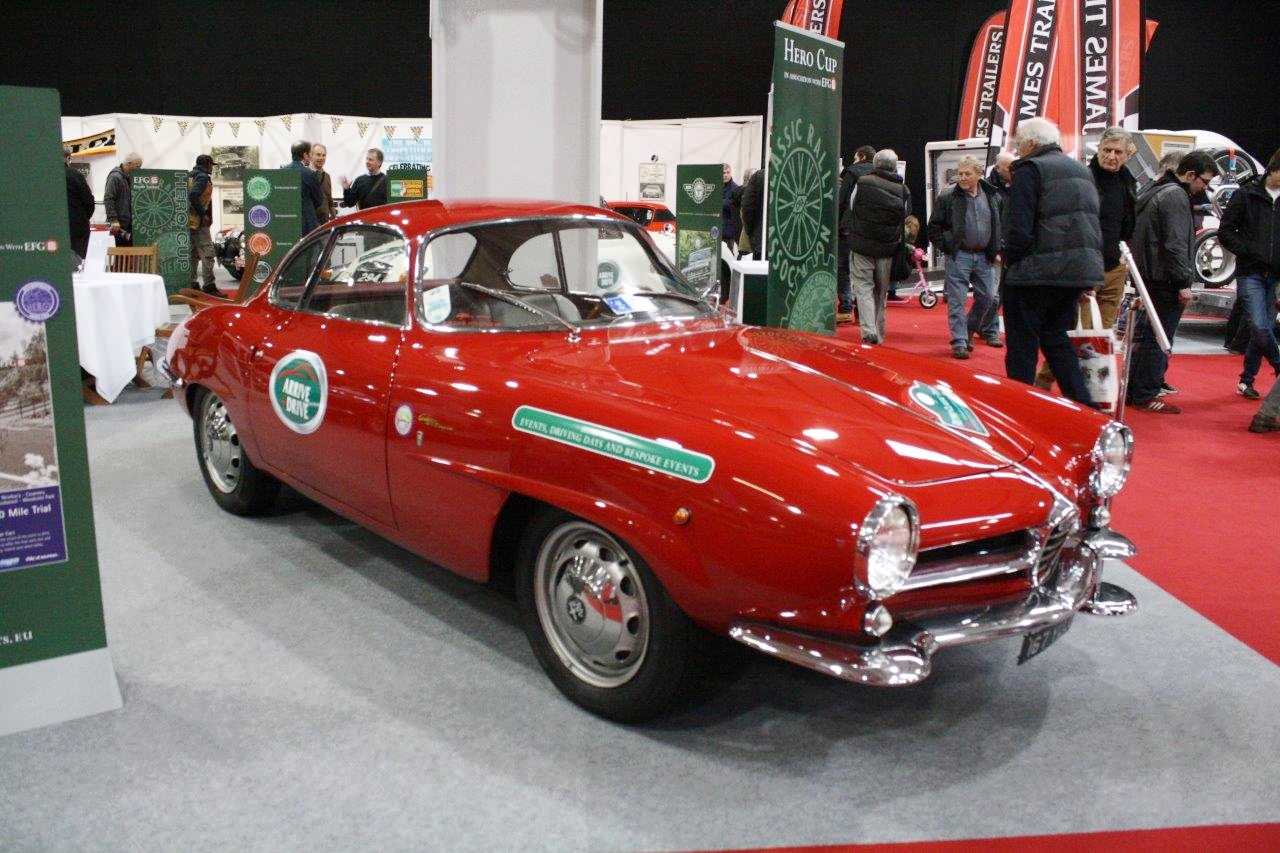-
Insurance
InsuranceAbout our productsLearn about insuringGet a quote Get current values, historical values, model history and more.
-
Valuation
ValuationHagerty valuation toolLook up a vehicle value Get current values, historical values, model history and more.
-
Events
EventsHagerty official eventsHagerty ClubhouseEvent calendar
-
Entertainment
EntertainmentMore to explore
- Portal login
1958 Alfa Romeo Giulietta Sprint Speciale
Base Coupe 1.3 L
Vehicle values by condition
Fair
Condition 4
£49,000
#4 cars are daily drivers, with flaws visible to the naked eye. The chrome might have pitting or scratches, the windshield might be chipped.
Good
Condition 3
£65,800
#3 cars could possess some, but not all of the issues of a #4 car, but they will be balanced by other factors such as a fresh paint job or a new, correct interior.
Excellent
Condition 2
£82,700
#2 cars could win a local or regional show. They can be former #1 cars that have been driven or have aged. Seasoned observers will have to look closely for flaws.
Concours
Condition 1
£112,000
#1 vehicles are the best in the world. The visual image is of the best car, unmodified, in the right colours, driving onto the lawn at the finest concours.
Insurance premium for a
1958 Alfa Romeo Giulietta Sprint Speciale Base Coupe 1290
valued at £65,800
£306.88
/ year*
History of the 1958 - 1962 Alfa Romeo Giulietta Sprint Speciale

1958 - 1962 Alfa Romeo Giulietta Sprint Speciale
The Alfa Romeo 750 Series (later 101) Giulietta was a range of cars made between 1954 and 1965 aimed at the sports car market. The Giulietta had a number of different body styles: the Bertone- designed Sprint (2-door, 2 person coupe), the Pininfarina-designed Spider (2 person convertible), the Berlina (4-door, 5 person saloon), the Sprint Speciale (2 door, 2 person sports coupe), the Sprint Zagato (2-door, 2 person sports) and the rare Promiscua (4-door, 5 person estate). The Giulietta used the Alfa Romeo twin-cam engine in a front engine, rear wheel drive layout, and employed a monocoque chassis design. A 4-speed, aluminium-cased gearbox was used with floor-mounted gear lever, except early pre ’57 models which used a column- shift. The Sprint Speciale (SS) and Sprint Zagato (SZ) used a 5-speed gearbox.
First to be released in 1954 was the 750B Alfa Romeo Giulietta Sprint. Much lighter than its 1900 CSS predecessor, this car provided state of the art technology including all-round coil spring suspension and an all-aluminium DOHC engine, making it nimble and quick. In 1959 the type code was changed to 101 when the body was re-styled. Some early cars had a back seat (the so-called ‘Confortevole’ ) but most had a parcel-shelf.
The following year came the 750D Spider (never ‘Spyder’). Sharing most mechanical components with the 750 B Sprint, this convertible used a simple folding canvas hood and retained the same basic body shape until 1965 (although from 1962 was known as the ‘Giulia Spider’.)
In 1955 came the Giulietta 750C Berlina. This salon was aimed at the family driver, and in 1957 an estate (the 750C Promiscua) was offered for those in need of more space. In 1958 came the 101.20 Sprint Speciale- a futuristic sports coupe which borrowed styling cues from the Disco Volante. With a more powerful engine and five-speed gearbox, this car was not well received by the public who considered it garish.
Finally, in 1959 Zagato offered their interpretation of the Giulietta, unveiling the tipo 101.26 Giulietta SZ, of which only 169 models were made. This 2-door sports coupe was everything the SS had not been, despite being based on its chassis. The Giulietta SZ had a very successful competition history including good results at Le Mans 24 Hour and the Targa Florio.
Between 1956 and 1962, Alfa Romeo also offered Veloce versions of the Giulietta Sprint and Spider. These cars were Portello’s response to the Porsche 356 Super, which humiliatingly defeated the Alfa at the 1955 Mille Miglia. With a score of engine upgrades including twin Weber DCO3s, the Veloce generated 30% more power. Some were lightened and sold in special ‘Lightweight’ trim, aimed at gentleman racers.
In 1957, a performance saloon version was offered: the tipo 753 Giulietta ti (Turismo Internazionale). With similar performance to the Sprint, the motoring press were astounded when unveiled to them at Monza.
Throughout its life, the Alfa Romeo Giulietta was offered with a 1290cc engine. A variety of combinations of Weber and Solex carburettors, camshaft profiles and intake & exhaust manifolds mean that power varied from 50hp (Giulietta Berlina) to 100hp (Giulietta SZ).
Ownership today of an Alfa Romeo Giulietta is a mixed bag. Mechanically it is simple- the vast majority of parts are interchangeable between models (and with later 105 series cars) and are widely available new, including upgrades. However trim and bodywork items can be very hard to find in good condition. Giulietta Spiders had their convertible top design subtly altered a number of times and correct frames can be almost impossible to find. Early 750 front and rear lights can also be very hard to find.
Alfa Romeo Giuliettas have risen in popularity in recent years. The Giulietta SZ, with its racing pedigree, is now a very collectable car and prices are accordingly high. The Giulietta SS has similarly risen in interest- once almost unsellable, these are now seen as very desirable classics. Early 750B Sprints and 750E Sprint Veloces are the most desirable of the coupes, especially the Lightweight and Confortevole cars. Giulietta ti cars are also very attractive as racing cars, as many allow entry into classic racing meets such as the Goodwood Revival and Silverstone Classic.
Other period Alfas include the larger Alfa 2600 range of Sprint, Spider and Berlina, and the later tipo 105 Giulia range of cars.
Alternatives from other manufacturers include the Fiat 600, the Fiat 1500, the Ford Consul, the Sunbeam Alpine and the Porsche 356.
Hagerty Newsletter
Get your weekly dose of car news from Hagerty UK in your inbox

ADVERTISEMENT